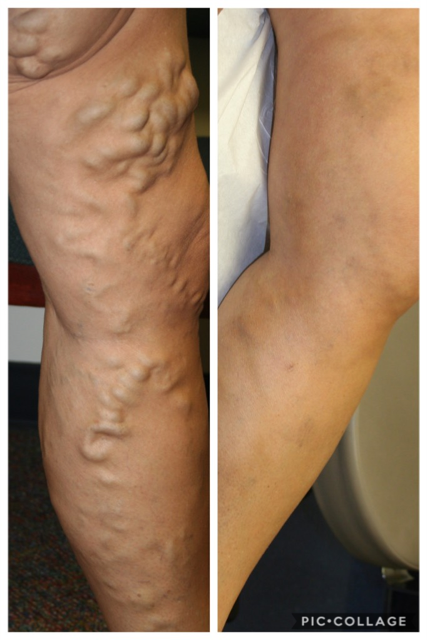What is Superficial Venous Reflux?
Superficial venous reflux is one of those conditions that can make its presence known only through the appearance of visible vessels on the skin’s surface like spider veins and varicose veins or through other symptoms even without visible veins at the surface.
Spider veins tend to form networks of visible blue red or purple lines that may resemble the legs on a spider. Varicose veins are bulging ropey veins that lift the skin up.
Superficial venous reflux is when one-way valves inside the veins fail and blood can travel backwards and make the vein overloaded and enlarged.
For many people, these unsightly vessels are only a cosmetic concern. The reflux may only be in the tiniest off veins and cannot be detected by ultrasound. Patients without additional symptoms can treat their spider veins and varicose for cosmetic reasons, but insurance does not typically cover this service.
Treatment usually involves sclerotherapy: injection of a solution that will cause the vein to be destroyed and disappear.
Symptoms of Superficial Venous Reflux
In other situations, superficial venous reflux may cause other symptoms, including:
- Pain, aching and heaviness, tiredness, fatigue in the legs
- Cramping or restless legs or at night
- Swelling of the lower extremity
- Brown or reddish skin discoloration in the lower legs
- Non healing wounds on the lower legs
These symptoms can even become severe enough to limit your activities and impact your quality of life. In most cases, these symptoms indicate venous reflux inside larger veins of the leg (saphenous veins). It is important to have a full assessment of the condition when you are suffering symptoms so your vein specialist can pinpoint the underlying cause and propose the most effective treatment. When these symptoms are present, insurance companies usually consider treatment of the larger veins and the visible spider and varicose veins medically necessary.
Diagnosis and Treatment Options
Diagnosis of venous reflux in the saphenous veins is done by ultrasound. The patient must be standing so that gravity will make the blood flow downhill through the non-functioning one-way valves. Ultrasounds performed with the patient lying down are usually limited to detecting blood clots and cannot accurately identify venous reflux. Hospitals, emergency rooms, urgent care centers, and doctor’s offices do not perform the proper ultrasound to detect reflux. This usually is only done by Vein Specialists.
Once reflux is diagnosed, treatment options can be discussed. If reflux is detected in the larger veins, other procedures like ClosureFast, Varithena, Clarivein, EVLT, or phlebectomy may be recommended. These procedures obliterate the larger refluxing vein with heat energy, chemical energy or a combination. Blood can still return to the heart by the major deep veins inside the muscle layer.
Don’t suffer with your spider or varicose veins or symptoms related to superficial venous reflux.
Learn more about your treatment options by contacting Vein Specialists of the Carolinas at 704-861-2072 or 704-544-5245.
“All We Do Is Veins, All Day Every Day.”

